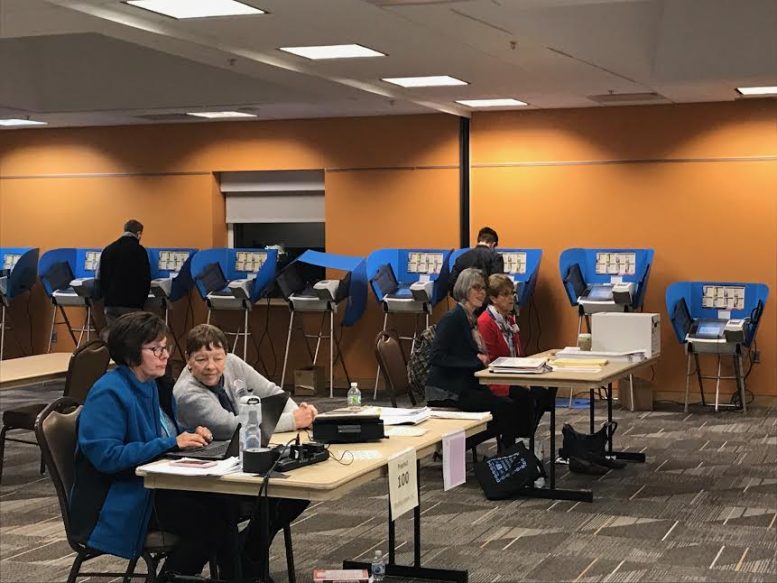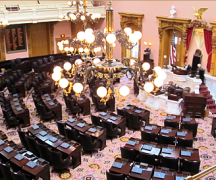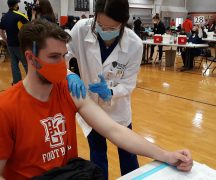Ohio Capital Journal
How will Ohioans cast their ballots in this November’s General Election? How will they do so in the elections that follow?
Those are the central questions at hand as America heads into a critical election season amid a nationwide health pandemic. It is unclear the extent to which COVID-19 will play a factor five months from now when Ohioans go to the polls, but elections officials and state legislators see a need to be prepared for anything.
As they pitch ideas for an altered General Election plan, many are proposing broader election reforms that may shape Ohio’s system in the years to come.
The Capital Journal recently reported on a number of these voting plans, including those from Ohio Secretary of State Frank LaRose, the Ohio House of Representatives’ Democratic caucus and advocacy groups making up the Ohio Voter Rights Coalition.
Since that article’s publication, several more proposals have been introduced. A chart clearly identifying who has proposed what is below.
Election changes must come from the state legislature. LaRose, who oversees elections in Ohio, has identified certain reforms he’d like the legislature to approve.
One proposal getting much attention comes from state Rep. Cindy Abrams, a Republican who represents the southwest corner of Ohio. Her bill addresses the need for a contingency plan should one be necessary in the case of a health emergency like COVID-19. Voting in Ohio’s March primary election was postponed at the last-minute due to concerns with in-person voting amid the pandemic.
Abrams’ bill would require the governor and state health director to submit a request to the state legislature 60 days in advance of an election to recommend the contingency plan be used.
Under such a plan, in-person polling places would be closed and Ohioans would vote absentee like they did this past spring.
However, there are aspects of the bill which propose broader changes to Ohio’s election system that would roll back some elements of voter access in the state. For example, it would prohibit the state from sending absentee ballot applications to all voters and prohibit the state from paying for voters’ postage. It also removes several days of early in-person voting just prior to an election.
In response, House Democrats proposed their own legislation, House Bill 687. In contrast to Abrams’ bill, the Democrats want postage paid envelopes and for the state to mail ballots themselves to voters — thus skipping the need to request an absentee ballot.
Here is the present list of proposals made for the 2020 General Election and Ohio election system:
General Election 2020/Ohio Election Reform – Proposals
There are many proposals being made on how Ohio can conduct a safe, fair General Election this November amid the COVID-19 pandemic. There are also plans to reform Ohio’s election system going forward.
| Person/Group | Allow Online Requests for Absentee Ballots? | Include Postage-Paid Envelopes With Mailings? | Mail Ballots Directly Without Absentee Request Step? | Better Funding to County Boards of Elections? | In-Person Voting on Election Day? | Expand Early In-Person Voting To More Than One Location? | Expand # of Drop Boxes To Deliver Absentee Ballots? | Expand List of People Who Can Turn In Absentee Ballots? |
| House Bill 680 (GOP Rep. Abrams) | No | No | No | N/A | Yes | No | No | No |
| Ohio Secretary of State Frank LaRose | Yes | Yes | No | Yes | Yes | Yes | No | No |
| Ohio Voter Rights Coalition | Yes | Yes | Yes | Yes | Yes | Yes | Yes | Yes |
| House Bill 687 (Democrats) | Yes | Yes | Yes | Yes | Yes | Yes | Yes | Yes |
| Senate Democrats | Yes | Yes | Only if in-person voting is restricted | Yes | Yes | No | Yes | No |
The Ohio Voter Rights Coalition is comprised of a number of voting advocacy groups around the state.
Table: Tyler Buchanan, Ohio Capital Journal Get the data Created with Datawrapper





